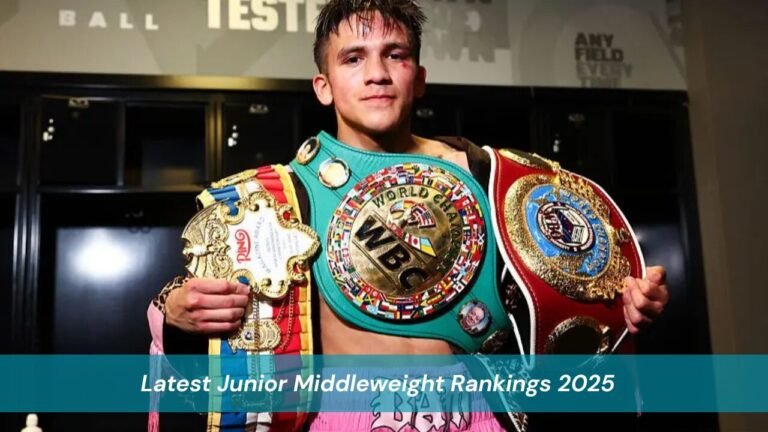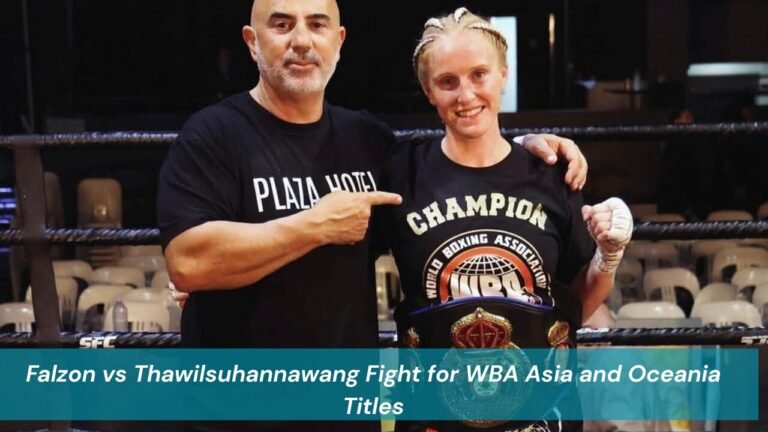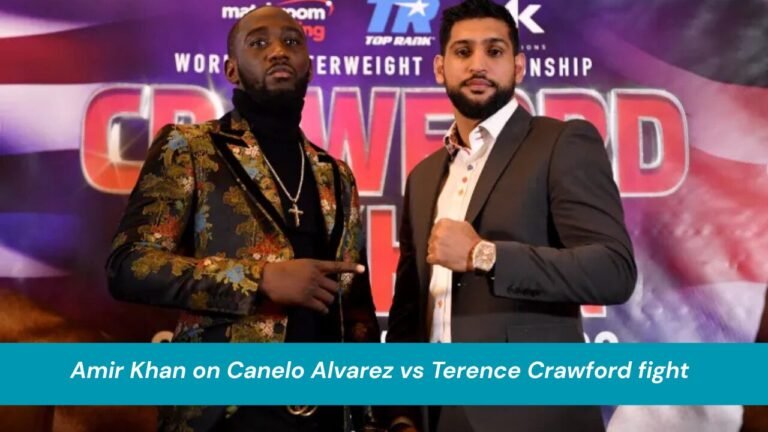From the opening of his emotional retirement video on June 5, 2025, when Vasiliy Lomachenko thanked his family, God, and fans, to reflections on the true meaning of victory, it was clear his decision to retire marked more than the end of a boxing career it was the closing of a chapter on a life defined by purpose and discipline. At the age of 37, Lomachenko confirmed the end of his 13-year professional journey, capping a legacy that few athletes in any sport have matched Tapology+15TalkSPORT+15MMAmania.com+15.
Early Life and Amateur Dominance
Born in Bilhorod‑Dnistrovskyi, Ukraine, in February 1988, Lomachenko was raised in a boxing household. His father Anatoly, both coach and mentor, instilled rigor, ethics, and a scientific approach to training, preparing Vasiliy not just to succeed but to excel at every level. As an amateur, he amassed an almost unbelievable record: 396 wins and a single loss, a rare defeat avenged decisively twice in later competitions, an achievement that places him among the all‑time best in amateur history.
Olympic Glory
His Olympic accomplishments reflect that dominance: gold medals in Beijing 2008 (featherweight) and London 2012 (lightweight), and the prestigious Val Barker Trophy in 2008 as the tournament’s top boxer. Few fighters in modern boxing can claim such credentials before even turning professional.
Bold Professional Debut
Signed by Top Rank Promotions in 2013, Lomachenko made a bold entrance into the professional ranks. Rather than build up through lesser opponents, he sought a world title in only his second pro bout, a direct challenge to Orlando Salido for the WBO featherweight strap.
Record-Breaking Title Win
Undeterred, Lomachenko’s very next fight was historic. Facing Gary Russell Jr. in fight number three, he won the WBO featherweight title and broke the record for the fastest male boxer ever to become a world champion. That moment began an era in which he rewritten expectations for progression in pro boxing.
Masterclass Across Divisions
What followed over the next years was a masterclass in the art of boxing world titles at featherweight, super‑featherweight, and lightweight, with stunning victories over elite opponents such as Nicholas Walters, Guillermo Rigondeaux, Jorge Linares, and Luke Campbell. His win over Linares in May 2018 was particularly noteworthy: after a knockdown in round 6, Lomachenko rallied to stop Linares in the 10th with a liver punch, becoming the fastest boxer ever to win titles in three weight divisions in just 12 fights.
Decisive Victory Over Rigondeaux
Against Rigondeaux in December 2017, Lomachenko dismantled the Cuban legend in six rounds, forcing the future Hall of Famer to quit between rounds.
Lightweight Unification
In September 2019, he unified the lightweight division by defeating Luke Campbell in London before a sell‑out crowd. Campbell, an elite amateur, challenged Lomachenko in a gritty battle, but the Ukrainian’s adaptability and timing prevailed, enhancing his reputation as a truly pound‑for‑pound fighter.
A Style Like No Other
Lomachenko’s style was a defining feature of his legacy. Nicknamed “Hi‑Tech,” he combined elite footwork, head movement, timing, and swimming‑pool‑smooth combinations into a style that made top contenders appear ordinary. Analysts have marveled at his ability to create angles, confuse opponents with feints, and showcase both offensive and defensive genius in equal measure.
Controversial Defeats
Even in defeat, his fights sparked debate and analysis. In October 2020, Lomachenko lost his unified lightweight titles to Teófimo López by unanimous decision at MGM Grand, in a bout with scorecards fiercely scrutinized. Despite mounting pressure from surgery and a challenging weight class jump, Lomachenko showed resilience, and the bout remains controversial among fans and pundits.
The Haney Fight and Public Outcry
In May 2023, he took on Devin Haney for the undisputed lightweight title. In a close bout, Lomachenko lost via split decision yet again. Critics and observers including The Guardian and widely cited social media labelled the outcome a “robbery,” believing Lomachenko had done enough to win. The event sold out the MGM Grand, generated substantial pay‑per‑view revenue, and ignited debate over boxing’s scoring system.
Final Triumph in Perth
Remarkably, Lomachenko came back in May 2024 to defeat George Kambosos Jr. in Perth via eleventh‑round TKO, capturing the vacant IBF lightweight title. That performance reaffirmed his elite status and would be his final professional fight.
Retirement and Legacy
When he announced his retirement in June 2025, Lomachenko concluded with a professional record of 18–3, including 12 knockouts, and a total of 21 professional fights, 19 of which were world title performances. Combined with his amateur record, his career spanned an astonishing total of over 400 fights, with 414 wins and just four losses overal.
A Message of Gratitude and Faith
His retirement statement, shared via video, resonated widely. Drawing on personal faith, gratitude, and introspection, Lomachenko thanked his father Anatoly, promoter Bob Arum, manager Egis Klimas, and the Ukrainian people. He noted that fame or belts were less important than inner clarity—setting a tone of personal growth beyond sport.
Reverence Among Fans and Experts
While boxing fans processed his exit, experts praised Lomachenko’s significance. In r/Boxing forums, superfans pointed to his record-breaking start, titles in three divisions, and domination over more than a dozen world champions as reasons he belongs in any Boxing Hall of Fame without question.
Transforming Training Culture
Lomachenko’s influence extends beyond competition. His training philosophy—integrating memory exercises, rhythm drills, Ukrainian folk dance, and coordination work—reshaped modern boxing camps. Drill videos showing him shadowboxing blindfolded or performing dizzying footwork routines have become study material for trainers globally.
Patriotism in Wartime
During Russia’s invasion of Ukraine in 2022, Lomachenko paused his boxing career to join the Territorial Defence Forces in Odessa. That decision earned him worldwide respect and reinforced the notion that his commitment went beyond sport to include service and patriotism.
What’s Next for Lomachenko?
Looking forward, while Lomachenko may no longer compete, his professional journey is far from over. Top Rank officials have indicated interest in integrating him into coaching and scouting roles, especially in developing Eastern European talent. His expertise, defined by technical mastery and lived experience, positions him to shape the next generation of champions.
Conclusion
In sum, Vasiliy Lomachenko retires as one of boxing’s most complete athletes, an amateur unmatched in victories, a pro who redefined how quickly excellence could be achieved, and a stylist who turned fighting into art. His journey spans Olympic glory, world titles in multiple divisions, military service, and global admiration. Future Hall of Fame discussions will inevitably include his name, not just for wins, but for the precision, innovation, and humility he brought to every fight.
FAQs
Who did Vasiliy Lomachenko face in his final professional bout?
His last fight was against George Kambosos Jr. in May 2024 in Perth, where Lomachenko won by eleventh‑round TKO to claim the vacant IBF lightweight title.
How many total professional fights did Lomachenko have?
He completed 21 professional bouts, compiling a record of 18–3 with 12 knockouts, and participated in 19 title fights.
Why is Lomachenko considered a generational talent?
He combined the fastest world title achievement in just three bouts, Olympic dominance, innovative ring tactics, and victories across three weight divisions earning widespread recognition as one of boxing’s elite technical fighters
Will Lomachenko stay involved in boxing?
Although no official role is confirmed, Lomachenko is expected to continue his influence as a coach, mentor, or talent scout through Top Rank and boxing development programs.




